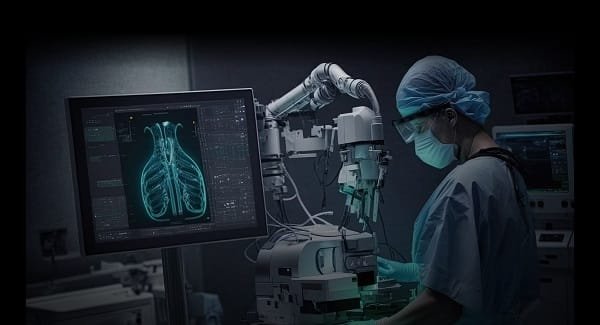In modern healthcare, early intervention can mean the difference between a minor issue and a major crisis. Predictive health alerts, driven by artificial intelligence, are helping to close that gap. By analyzing continuous data streams and recognizing subtle changes, these tools warn patients and clinicians before problems escalate. Joe Kiani, founder of Masimo and Willow Laboratories, advocates for real-time, actionable data in patient care. Predictive alerts can help shift healthcare from reaction to prevention, especially when these tools are designed with the user experience in mind.
When predictive alerts are thoughtfully designed, they not only inform; they empower. Users gain a sense of control over their health, while clinicians receive timely insights that support proactive care. This shared awareness strengthens the partnership between patient and provider, making interventions more collaborative and effective. As these technologies become more refined and personalized, they have the potential to transform preventive care from a passive concept into a daily practice.
The Power of a Timely Warning
Traditional health systems often rely on patients reporting symptoms after they appear. But in many cases, warning signs emerge earlier, hidden in heart rate patterns, respiratory fluctuations or behavioral changes.
Predictive health alerts identify these early markers and notify users before visible symptoms take hold. It leads to faster decision-making, whether it means scheduling a doctor’s visit, adjusting medication or simply resting.
By catching subtle changes in patterns, like rising heart rate variability or disrupted sleep, AI-driven systems can flag concerns well before they escalate. It empowers users to act with confidence rather than uncertainty. It also gives providers a clearer picture of emerging issues, enabling earlier and more precise interventions. In preventive care, these timely alerts can be the difference between staying well and entering a health crisis.
AI Enhances Accuracy and Personalization
Artificial intelligence makes these alerts smarter. Rather than relying on static thresholds, AI adapts to each user’s baseline and history. For example, a slight change in oxygen saturation might be normal for one person but significant for another.
The integration of artificial intelligence in healthcare is transforming patient management and proactive care. Joe Kiani Masimo founder remarks, “We’ve seen how AI and digital tools can now predict patient deterioration before it happens. If we apply the same principles to diabetes, we can shift from treating crises to preventing them.” This forward-thinking approach highlights the potential of AI to revolutionize chronic disease management, particularly in conditions like diabetes.
Reducing Alarm Fatigue
One of the challenges in health monitoring is alarm fatigue, when frequent, non-critical alerts cause users to tune out. Predictive systems help reduce this by learning which changes are meaningful and tailoring alerts accordingly.
Instead of constant pings, users receive fewer, but more relevant, notifications. It helps preserve trust in the system and encourages timely responses. When every alert has a clear purpose and value, users are more likely to pay attention and act. This selective approach reduces noise and creates a more focused, manageable experience.
Over-alerting can lead to frustration and disengagement, while thoughtful, timely nudges feel supportive rather than disruptive. Ultimately, quality over quantity in notifications fosters a stronger, more sustainable connection between users and their health tools.
Improving Clinical Decision-Making
Predictive alerts are not just useful for individuals. They also support providers by offering context-rich insights between appointments. AI-generated summaries help clinicians spot trends, evaluate risk and intervene earlier.
That is particularly valuable in preventive care, where time-sensitive responses can avoid hospitalizations or complications. When consistent, predictive data backs providers’ decisions, they gain more confidence. AI-driven insights offer an added layer of clarity, helping clinicians prioritize care and intervene earlier. It reduces uncertainty and supports faster, more targeted decision-making. In high-pressure environments, having reliable, real-time data at hand can make all the difference. The fusion of clinical expertise and intelligent systems leads to more proactive, personalized and effective care.
Integrating Into Daily Life
Effective predictive alerts feel natural, not disruptive. Whether delivered through a wearable, smartphone or synced device, the message needs to be clear and actionable.
A reminder to hydrate after a spike in activity or a gentle prompt to check blood pressure after a restless night can make a meaningful difference. These alerts become more than warnings; they become guides.
When timed thoughtfully and delivered with empathy, they show users that the system is paying attention and responding to their unique patterns. This kind of personalized interaction fosters trust and a sense of partnership. Rather than feeling monitored, users feel supported, like they have a health coach quietly working in the background. Over time, these small, well-placed prompts help users stay on track and make proactive choices without feeling overwhelmed.
Ongoing Consent and Transparency
As these systems rely on continuous data collection, transparency and privacy protection are essential. Users need to understand how their information is used and feel secure in their participation.
Ethical innovation in digital health means creating systems that are not only effective but also respectful of the people who use them. Designing alerts that respect privacy and prioritize consent builds the trust necessary for long-term engagement. Users should always have clarity about what data is being collected, how it’s used and who can access it.
Consent must be ongoing, not a one-time checkbox, with options to adjust settings as users’ comfort levels or needs change. Ethical design also includes providing meaningful choices, such as opting out of certain features or customizing alert preferences. When users feel in control, they’re more likely to stay engaged and benefit from the technology. Building digital health tools with transparency, respect and integrity at the core ensures that innovation truly serves the people it’s meant to help.
Expanding Access to Preventive Care
Predictive alerts also help close gaps in access. In rural or underserved areas, where frequent check-ups may be difficult, these tools bring preventive support directly to the user. The convenience and immediacy of alerts make healthcare more proactive and equitable.
Predictive health alerts are reshaping how we approach patient safety. By spotting potential problems before they escalate, they give users and providers the chance to act earlier and more effectively. The belief in timely, personalized data is becoming a reality in these systems. When alerts are accurate, relevant, and respectful, they help users make smarter choices and live healthier lives before emergencies occur.






